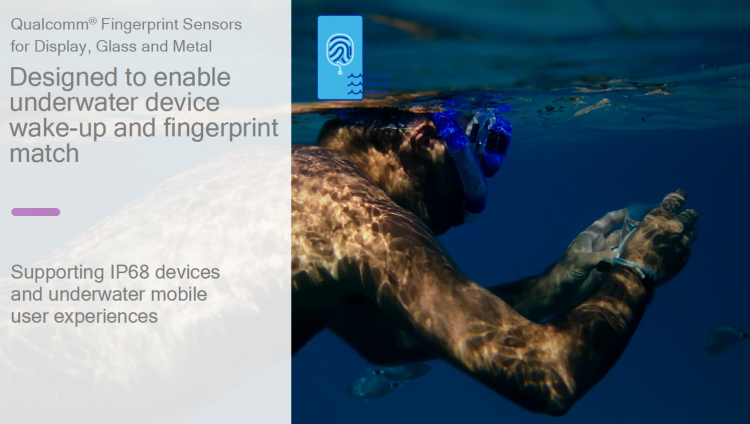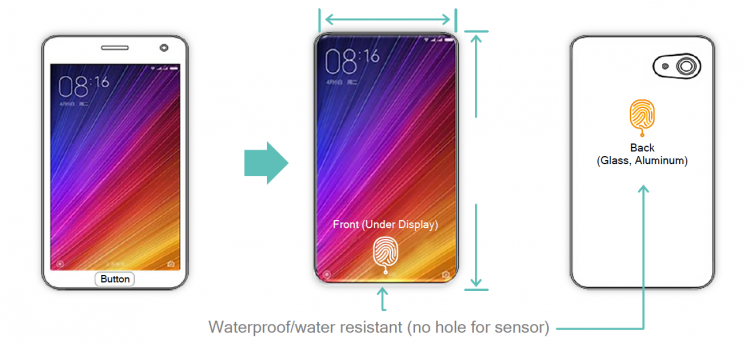Using a fingerprint to unlock your phone is one of the most convenient ways to make sure that your information and photos are kept locked down. But fingerprint technology hasn’t kept up with all of the capabilities newer phones sport — like waterproofing and being able to fearlessly to use your phone in the rain or in the pool.

How many times have you tried to use your phone’s fingerprint sensor when you had wet fingers? It’s impossible.
Not sure what I’m talking about? Lick your finger and then try to unlock your phone using just the fingerprint scanner.
Go ahead … I’ll wait.
Any luck?
If you have an iPhone with the new iOS 11 beta running, you may not even see the PIN pad option if your phone was recently open (it’s a feature, though!), and if that’s the case … you either have to dry your phone or your finger before you can unlock. It’s not a huge deal, but it can be inconvenient. That’s an example of how our phones’ capabilities have advanced, but the fingerprint sensors aren’t quite keeping up.
But that changes today.
Qualcomm is announcing Qualcomm Snapdragon Sense ID Fingerprint Technology. I know it’s a mouthful, but put simply, it’s a suite of features that “consists of sensors for Display, Glass and Metal, detection of directional gestures, and underwater fingerprint match and device wake-up.” It’s also the first “commercially announced integrated ultrasonic-based mobile solution to detect heartbeat and blood flow for improved mobile authentication experiences.”
Phone designs are changing, and as more of them become waterproof, bezel-less phones with the fingerprint sensors built directly under a section of the front display or under the glass or aluminum on the back of the device will finally become a reality.

Qualcomm Fingerprint Sensors in displays, glass and metal will allow you to wake and unlock your phone “through common contaminants like water and oil, supporting consistent, reliable authentication.”
“We are excited to announce Qualcomm Fingerprint Sensors because they can be designed to support sleeker, cutting-edge form factors, unique mobile authentication experiences, and enhanced security authentication,” said Seshu Madhavapeddy, vice president, product management, Qualcomm Technologies, Inc. “This provides OEMs and operators with the ability to offer truly distinct, differentiated devices with added value on truly groundbreaking new devices.”
Even crazier, though, is that you’ll be able to use the same sensor under the display or the glass or metal back to check your heartbeat and blood flow.

Where can I buy this magical bezel-less phone? I want it now!
The direction that you swipe your finger across the display, glass or metal can also be “mapped to a specific UI function, supporting alternative forms of navigation.”
This will mean our new phones will be even more capable of doing what we want them to do when we want them to do it — even when underwater.
The first commercial samples with Qualcomm Fingerprint Sensors for glass and metal will be available for OEMs in July 2017; we can expect to see phones using this new technology in the first half of 2018. “Qualcomm Fingerprint Sensor for Display is expected to be available for OEMs to evaluate in the fourth quarter of 2017.”
Things are about to get pretty cool, don’t you think?
Qualcomm Fingerprint Sensors will integrate with Qualcomm Snapdragon Platforms and there will also be standalone sensors for non-Snapdragon platforms. You can learn more here.
